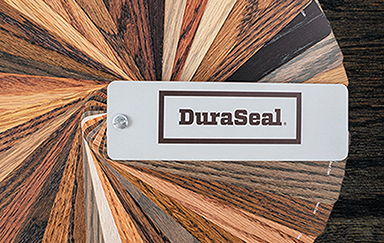Introduction to Swarovski
Swarovski stands as a prestigious and globally recognized name in the world of crystals, renowned for its dazzling pieces that adorn jewelry and home décor. For over a century, Swarovski has been a pioneer in crystal cutting and design, blending traditional European craftsmanship with modern technology, fashion allure, and innovative spirit.
Early History and Founding
The Visionary Behind Swarovski: Daniel Swarovski
The origins of Swarovski date back to the 19th century, with its founder, Daniel Swarovski, who played a crucial role in transforming the crystal manufacturing industry. Born in 1862 in Bohemia (present-day Czech Republic), an area famous for glass production, Daniel Swarovski’s journey began with education in Paris and Vienna, followed by hands-on experience in family-owned glass factories. Driven by a vision to make precision-cut crystals accessible, Daniel embraced mechanical polishing technologies that allowed for affordable crystals with the exquisite finish of hand-crafted pieces.
Innovation in Crystal Cutting
In 1892, Daniel Swarovski established the company, initially named A. Kosmann, D. Swarovski & Co., in Wattens, Austria. Utilizing hydroelectric power from the Inn River, Swarovski’s specially adapted machinery revolutionized the crystal industry with innovations such as patented cutting techniques. This enabled the production of high-quality crystals at unprecedented speed, scale, and cost-effectiveness.
Expansion and Growth
Establishing a European Legacy
Swarovski’s reputation for delivering unparalleled crystal elements quickly spread among European nobility and the luxury market. The company expanded its facilities and perfected techniques to enhance the color, cuts, and coatings of its crystals, solidifying its position as a leader in the industry.
Entering the American Market
Swarovski’s success in Europe paved the way for expansion across the Atlantic, bringing their sparkling crystals to the thriving American market.
The New York Store
In 1937, Swarovski opened a flagship store on New York’s prestigious 5th Avenue, where they offered Czech crystal beads, pendants, and jewelry to the American elite. This venture helped to further elevate the Swarovski brand on a global scale.
Hollywood Glamour
By the 1940s, Swarovski crystals had become synonymous with Hollywood luxury, adorning stars like Joan Crawford and Marlene Dietrich. This association with celebrity culture boosted the brand’s allure and aspiration.
Modern Products and Technologies
Exquisite Jewelry Collections
Swarovski’s jewelry collections encompass a wide range of styles, from classic and elegant to modern and playful. Their necklaces, rings, bracelets, and earrings capture the timeless brilliance and vibrant colors that are the hallmark of Swarovski crystals.
Home Décor and Collectibles
Swarovski’s iconic figurines, such as dancing ballerinas, have been beloved collectibles for decades. The company has also expanded into home furnishings, lighting, and decorative art pieces, all enhanced by the breathtaking sparkle of Swarovski crystals.
Continuous Innovation
Swarovski remains at the forefront of innovation with advancements in crystal clarity, color consistency, and cutting techniques. The company also explores new materials and environmentally friendly practices, ensuring it maintains its competitive edge while committing to sustainability.
Commitment to Sustainability and Social Responsibility
Sustainable Practices
Swarovski aims to use 100% recycled metals and sustainable packaging by 2025. They conduct environmental and social audits to address issues such as water usage, waste management, and working conditions, ensuring ethical practices throughout their supply chain.
Philanthropy and Community Engagement
The Swarovski Foundation supports initiatives in arts, culture, design, and charitable causes. The Swarovski Waterschool educates communities on water conservation and sanitation, particularly empowering teachers and female students in countries like India and Uganda.
The Swarovski Waterschool
Operating in 15 countries, the Waterschool program enhances science education with a focus on water, improving sustainable practices both locally and globally through knowledge sharing within communities.
Major Collaborations and Creative Ventures
Fashion Collaborations
Swarovski crystals are a favorite among couture houses and emerging designers, who incorporate them into clothing, shoes, and accessories for stunning embellishments. Swarovski also creates custom-made crystals tailored to specific design needs.
Architectural Marvels
The Swarovski Kristallwelten (Crystal Worlds) museum in Austria is a testament to the brand’s architectural creativity, featuring rooms filled with crystal marvels. Installations by artists like James Turrell use Swarovski crystals to create immersive sensory experiences.
Artistic Endeavors
Artists such as Andy Warhol have integrated Swarovski crystals into their works, showcasing their versatility in various mediums, including innovative applications like printing 3D crystals onto textiles.
The Future of Swarovski
Embracing Digitalization
Swarovski is leveraging digital technologies to enhance customer experience through advanced analytics, augmented reality, virtual try-ons, and more, ensuring they stay at the cutting edge of the industry.
Expanding into New Markets
With growing middle-class populations in countries like China and India, Swarovski sees significant opportunities for expansion, catering to a burgeoning market eager for luxury brands.
Preserving Tradition
Despite technological advancements, Swarovski remains dedicated to traditional techniques like glass blowing, preserving the heritage and craftsmanship that define their unique products.
Conclusion: A Legacy of Innovation and Impact
For over a century, Swarovski has revolutionized the realms of jewelry, design, art, architecture, cinema, and fashion by making high-quality crystals widely accessible. Their continued commitment to innovation and tradition ensures that Swarovski will keep inspiring beauty and creativity around the world.
FAQs
How did Swarovski get started?
Swarovski was founded in 1892 by Daniel Swarovski, who established the company in Austria. He introduced innovative crystal cutting techniques that allowed for the production of affordable, precision-cut crystals.
What makes Swarovski crystals special?
Swarovski crystals are renowned for their unique cuts, vibrant colors, and high-quality coatings, which result in exceptional clarity, sparkle, and visual impact. The company adheres to the highest standards of precision, beauty, and durability.
What industries use Swarovski crystals?
Swarovski crystals are utilized in various industries, including jewelry, fashion, architecture, design, lighting, art installations, luxury vehicles, and technology products, thanks to their versatile and captivating sparkle.
How does Swarovski balance tradition and innovation?
Swarovski honors its century-old glassmaking heritage while continuously developing new technologies. This allows the company to scale production and maintain the craftsmanship and authenticity that are integral to its legacy.
How does Swarovski give back?
Swarovski focuses on sustainability and social responsibility, using recycled materials, ensuring ethical supply chain practices, and supporting philanthropic initiatives like the Swarovski Waterschool, which promotes clean water access and education globally.




